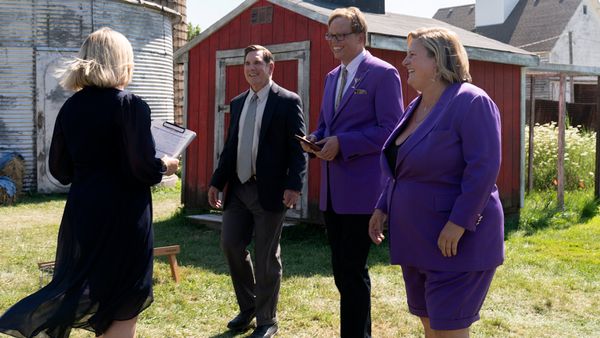
October 8, 2017
Vernacular Eye
Sura Wood READ TIME: 4 MIN.
Somewhere deep in the heart of the mammoth new Walker Evans retrospective at SFMOMA lies a group of black & white photographs of sidelined circus wagons. The cheesy, ornately decorated parade vehicles had come to their final resting place in a Ringling Bros. parking lot, a graveyard really, in Sarasota, Florida. Evans, who adored modes of transport, approached the site as if it were a crime scene and he a forensic photographer, shooting the abandoned wagons from every conceivable angle, without artifice and with an absence of pretension, both signatures of his work. The objects, notes the exhibition text, combined his twin passions for "the vehicular and the vernacular."
A quintessential American photographer who's inarguably one of the most influential of the 20th century, Evans attempted to define the fundamental features of American culture through photography. He found beauty in the everyday - mundane buildings, roadside signs, storefronts, the behemoth underside of the Brooklyn Bridge in 1929 - elevating the merely visible to the realm of high art. The elite prep school-educated son of a Midwestern advertising executive, he caught the way we were at a certain point in time - the anonymous people navigating busy city streets or looking out from a second-story window; isolated figures riding decrepit New York City subways; a garage on the outskirts of Atlanta with a jalopy in front and car parts hanging from its facade; shop windows packed with oddball objects and mannequins his camera savored - before globalization reduced expressions of regional and individual identity to homogeneity.
At SFMOMA, Evans gets an exhaustive, and frankly exhausting, exhibition worthy of his stature, but one that's nearly defeated by its quest for comprehensiveness. Missing in the midst of plenty is an overriding point of view and a rigor in making difficult curatorial choices. With 100 objects and 300 vintage prints jockeying for attention, sometimes with confusing labeling, the vast quantity leads to repetition, and tends to dilute the power of works that survived the cut. Just because photos are taken by a great photographer doesn't mean every photo is great, a thesis borne out in sections featuring Evans' Polaroids, over a dozen photographs of MoMA's African sculptures, and a series on hand tools, none of which warrant the amount of space allotted to them. But there are old friends here, too, such as " Main Street, Saratoga Springs New York, 1931," which has the lyricism of an Impressionist painting of a rainy, tree-lined Paris street.
Divided into two parts, the show occupies almost the entire third floor of the museum. Part 1, the more substantial of the two, would've sufficed; only the most intrepid won't feel vanquished by the end of Part 2. Organized thematically rather than chronologically, an approach that results in overlapping categories, the exhibition stretches from the 1920s through the 70s. His magazine spreads for Fortune, where he enjoyed the rare freedom of cropping his own photos and overseeing the presentation, are exhibited on gallery walls, as is ephemera such as the postcards he avidly collected, and signs, several of which he evidently absconded with after he finished photographing them. (A choice red-and-white road sign riddled with BBs or bullets here is lovingly framed.) He had a touch of the felon in him, and other personal tidbits like that one would have helped flesh out the man behind the images in a show that's light on insight and perspective, and heavy on pictures and objects. Pictures of the interior of Evans' home reveal walls covered with his rescued (or stolen) treasures and a bathroom sink piled with postcards. A scrapbook of clippings titled "Pictures of the Time: 1925-35," containing the front page of a yellowing 1928 newspaper depicting a woman blindfolded and strapped to an electric chair, and a hazy image of a lynching with a caption in French noting that "the negro" was hanged and burned in front of onlookers, offers tantalizing clues to how his mind worked.
He also gravitated toward movie posters, which he shot with a clinical detachment. Some belie a taste for the lurid or disconcerting, like "Sex Maniac," with a man carrying a woman's limp body; another promotes "Love before Breakfast," with Carole Lombard sporting a prominent black eye. Evans seems more emotionally engaged with a poignant series that took him to Arkansas in the aftermath of the Great Flood of 1937, where he visited racially segregated camps crowded with the dispossessed. In a brilliant stroke, he photographed the legs of desperate African-American men in wrinkled pants and scuffed shoes as they waited on a food line; the vantage point makes the viewer acutely aware of their despair while conveying that suffering is at once universal and exquisitely personal. It would be Evans' last assignment from the FSA, for whom he had shot his most iconic Depression photographs of the plain, dirt-poor Allie Mae Burroughs, wife of an Alabama sharecropper, and her family (1936).
Throughout his career, Evans was compelled by the spectacle of faded glory, from crumbling mansions like the once-grand Louisiana plantation with a giant tree downed in front of its faux Greek-columned portico (1935), to the Colonial ruins of Havana, where, in 1933, he captured an elderly man in a creamy jacket hunched over on crutches. Evans photographed him against a marbled stone wall whose texture the artist surely noticed, bringing the scene and the subject's pride and pain into close range, if only for a fleeting moment.
Through Feb. 4. sfmoma.org







